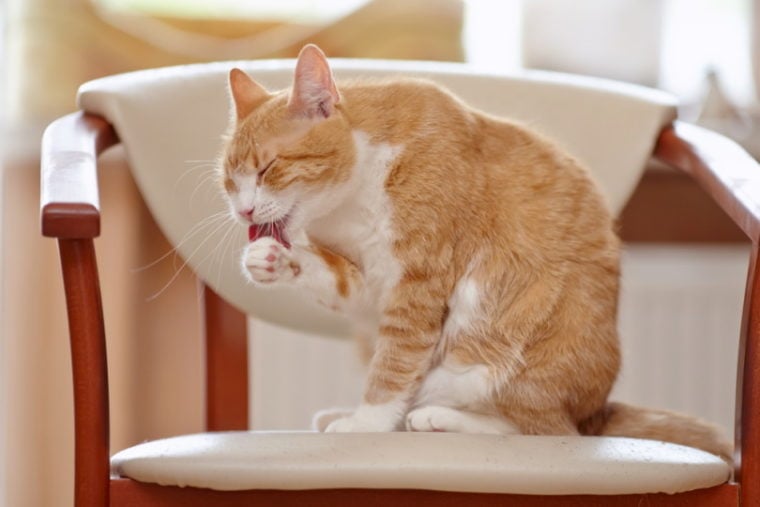
Cats enjoy being clean and devote a great deal of time to self-grooming, making them relatively low maintenance for cat owners. However, sometimes cats need help tending to their grooming needs. For example, their paws take on significant wear and tear as they play, hunt, and pounce in the house, leaving them susceptible to skin conditions and nail damage.1 Cats may also have debris stuck to their paws, such as litter or dirt.
Cleaning your cat’s paws regularly is vital to keeping them healthy and comfortable. Here’s how to tend to your cat’s paws.
The 8 Steps to Clean Cat Paws
1. Gather Supplies to Clean Your Cat’s Paws
You can wash your cat’s paws in your tub or shower. If your cat is uncomfortable or skittish about having their paws cleaned, you may get better results with a small basin or pet wipes. Use your judgment to make the experience as stress-free as possible.

2. Set Up the Grooming Area
It’s best to set up your grooming area in advance. Get your supplies ready and remove other pets from the room. The last thing you want is distractions or disruptions that will make your cat more nervous or defensive.
If it’s your first time cleaning your cat’s paws, be sure to have both your shampoo and pet wipes handy. You may find that your cat is too uncomfortable with a shampoo-and-water cleaning, and you can switch to pet wipes to finish. It’s also helpful to have your towel or blanket ready to go if you need to restrain your cat.
Grooming your cat is a process that they either love or hate. If your kitty tends to despise their grooming sessions, you can make it a bit more enjoyable with our favorite brush on the market, the Hepper Cat Brush.
With its soft pins and a one-click button for easy clean-up, this brush is something that both you and your cat will enjoy.
At Pet Keen, we’ve admired Hepper for many years and decided to take a controlling ownership interest so that we could benefit from the outstanding designs of this cool cat company!
3. Prepare Your Cat
Cats have different personalities. Some may be fine with grooming tasks like paw cleaning, while others may become stressed or aggressive. If your cat is nervous or resistant to regular grooming, you may need to restrain them for paw cleaning.
Wrapping your cat in a towel or blanket can make it easier to restrain them for grooming. You may want to ask a friend or family member to help you hold your cat, making the whole process easier for everyone involved. This also reduces the risk of injury to both you and your cat if they’re resistant.
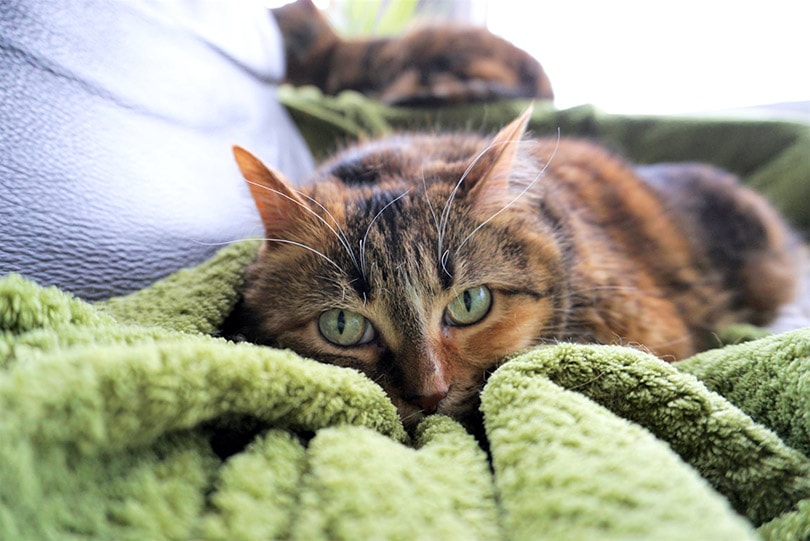
4. Examine Your Cat’s Paws
Before you clean your cat’s paws, take note of the general condition. Look for signs of inflammation, injury, and infection, as well as wounds, abrasions, or foreign objects. If your cat’s paws are really dirty, it may be difficult to get a good look but do your best.
If you do notice anything amiss, avoid cleaning your cat’s paw. Injuries or wounds may be uncomfortable for your cat, so try to clean any caked-on dirt and debris. Then, schedule a vet appointment to have your cat’s paws examined.
5. Rinse Your Cat’s Paws
If you don’t notice any signs of injury or infection, you can move forward with cleaning your cat’s paws. This not only removes the heavy dirt or debris, but it also prepares your cat’s paws for shampooing.
Begin with rinsing your cat’s paws with tepid water. Some cats won’t tolerate running water, so you may need to use a basin of water and dip your cat’s feet in. If your cat doesn’t like having their feet dipped, use a washcloth or pet wipe.
Rinse one paw at a time, lightly rubbing the dirt and debris away.
6. Shampoo Your Cat’s Paws
If your cat will tolerate it, put a small amount of cat-safe shampoo in your hand, and massage it into their paws. Do one paw at a time to maintain control of the situation and avoid overwhelming your cat.
Make sure you gently massage the top, the pads, and between the pads. This is where debris is likely to collect. As you shampoo, take note of any abnormalities or areas that seem especially tender for your cat, as this may indicate an injury.
If your cat doesn’t like water at all, whether running or in the basin, use pet wipes. You may need to go over your cat’s paws multiple times to get them clean, but they don’t need shampooing and rinsing.
Giving your pet a bath can be a difficult task, but the first step is to choose a great shampoo. We love Hepper's Shampoo Products, both of which are natural, pet-safe options specially formulated to clean your pet's skin and coat without causing irritation. Both formulas are also free of things like dyes, soaps, sulfates, and phthalates. Your pet will enjoy the soothing aloe vera and oatmeal, and you'll love the clean, fresh scents!
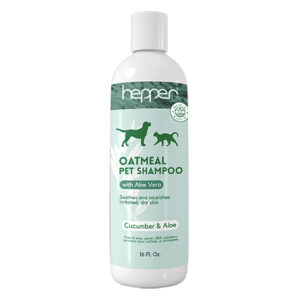 |
 |
|
|---|---|---|
| Hepper Colloidal Oatmeal Pet Shampoo | Hepper Waterless No Rinse Pet Shampoo | |
| Natural Ingredients |
Natural Ingredients:
|
Natural Ingredients:
|
| Made in USA |
Made in USA:
|
Made in USA:
|
| Safe for cats & dogs |
Safe for cats & dogs:
|
Safe for cats & dogs:
|
| Soothes dry skin |
Soothes dry skin:
|
Soothes dry skin:
|
| Waterless, no rinsing required |
Waterless, no rinsing required:
|
Waterless, no rinsing required:
|
At Pet Keen, we've admired Hepper for many years, and decided to take a controlling ownership interest so that we could benefit from the outstanding designs of this cool company!
Note: Always follow the instructions on your cat-safe shampoo bottle. Some are designed to be used directly, while others need to be diluted before use.
7. Rinse the Shampoo Off Your Cat’s Paws
Once each paw has been thoroughly washed with shampoo, rinse them with running water (as tolerated) or in a basin of water. You may need to massage your cat’s paws and replace the water frequently to remove all the shampoo. Residue from shampoo can irritate your cat’s paws.
If your cat doesn’t tolerate running water or dipping, use a washcloth, and rinse it out frequently to remove shampoo residue. It may take longer to rinse your cat’s paws completely this way, so be patient!
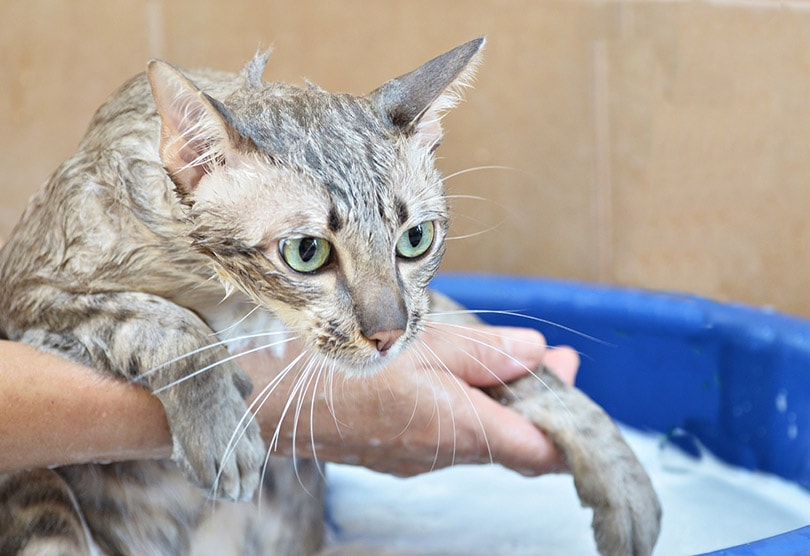
8. Dry Your Cat’s Paws
With a dry towel, gently dry your cat’s paws. Make sure to do the tops, bottoms, and between the pads, and dry them as best you can. Your cat will handle the rest.
When to Call a Vet
Cat’s paws are their contact with the world. Walking through toxic substances and irritants can cause skin inflammation and discomfort. Cats may have foreign objects between their paws, wounds, or injuries to the bones or connective tissue. In addition, underlying health conditions, excessive grooming, and allergies can cause redness and irritation.
Your cat’s paws should be free from wounds, redness, swelling, or injury, and the nails should be intact. If you notice foreign objects, irritation, or injury, it’s crucial to contact your vet for an exam and possible treatment.
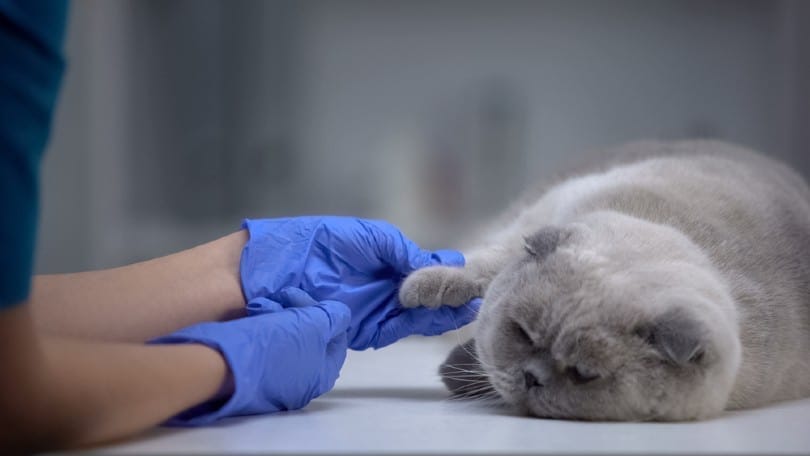
Keep Your Cat’s Paws Clean
Cats do a great job of grooming themselves, but paying extra attention to their paws ensures that they’re happy and healthy. While some cats may be resistant to paw cleaning at first, patience and rewards—such as treats—can help your cat adjust and become more comfortable with this regular grooming task.
Featured Image Credit: Elya Vatel, Shutterstock









